Almas Caviar and 10 Other Foods Only the Rich Can Afford
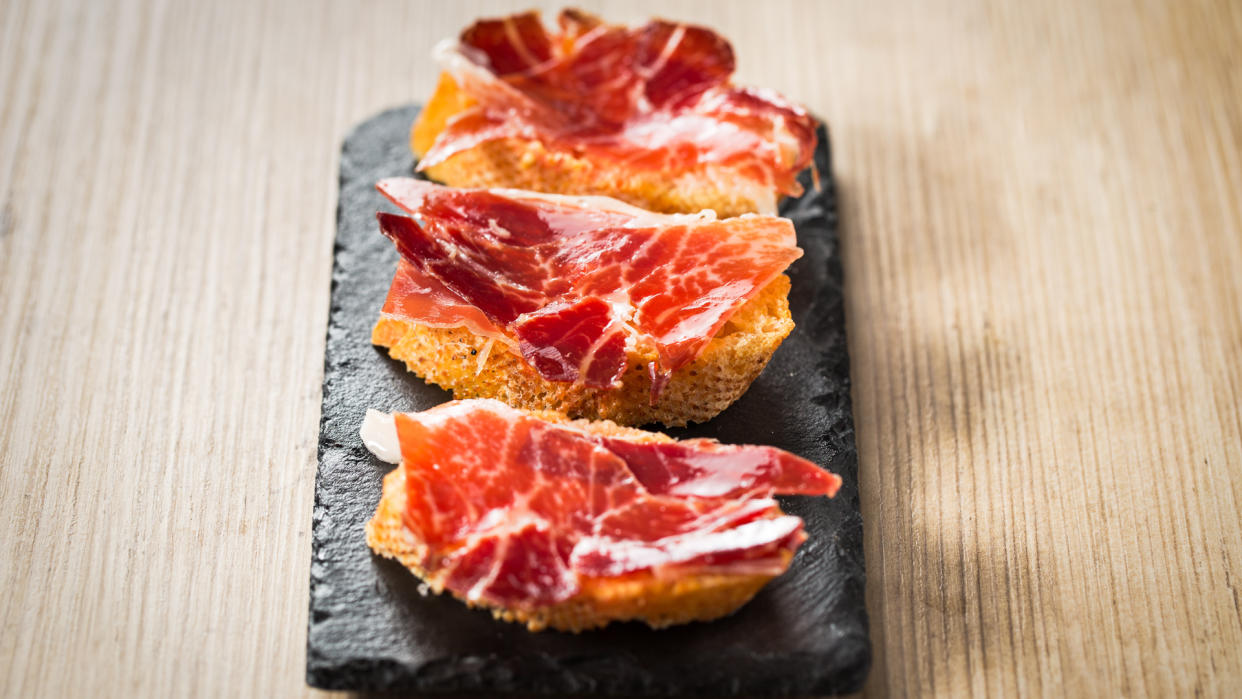
Every now and then, you hear about restaurants serving up exorbitantly high-priced dishes — a $12,000 pizza here, a $4,000 plate of curry there — and you might think, “Oh, it probably costs so much because it’s sprinkled with edible gold flakes.” In most cases, you’d be right.
Read: 15 Highest-Grossing Actors of All Time
But sometimes certain foods are so expensive because they are incredibly rare, in-demand and oh-so-pleasing to the palette. Only the ultra-wealthy can afford to splurge on these foods, as their prices reach absurdly high.
Last updated: April 16, 2021
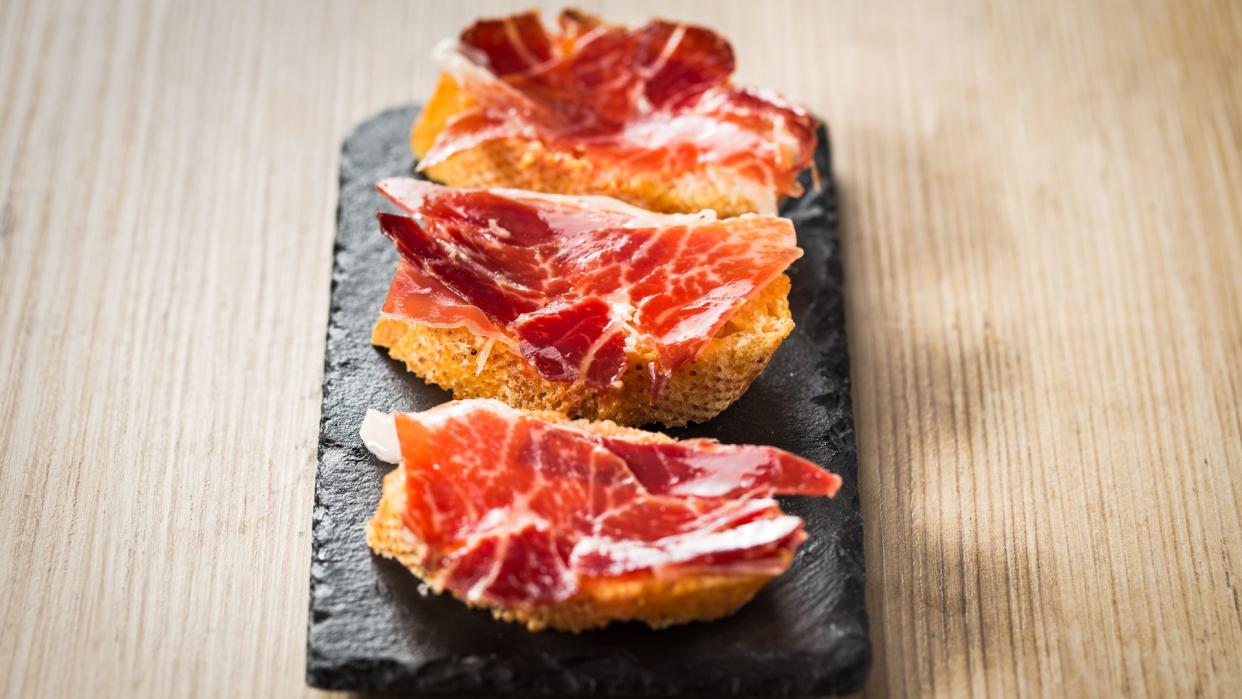
Jamón Ibérico de Bellota (Iberian Ham)
Price: About $160 per pound
One taste of jamón Ibérico de bellota and you’ll feel justified spending so much money on ham. This is what the Spanish royals eat. Made from acorn-fed wild pigs from the Southwestern Iberian peninsula, jamón Ibérico de bellota has sweetness tempered with saltiness and a touch of acidity, similar to Parmesan. Additionally, its fat has a melting point so low that it dissolves on the tongue and coats the palate like cream.
You don’t have to be wealthy to enjoy jamón Ibérico de bellota because a little goes a long way. Pick up an ounce or two for $15 to $25, and serve it on a special occasion with a full-bodied red wine, such as Chianti.
Related: Here’s How Much You Need To Earn To Be ‘Rich’ in Every State

La Bonnotte Potatoes
Price: About $300 per pound
Starch, fiber, potassium and vitamin C: The humble potato’s constituents don’t exactly jump out at you and scream, “Eat me, I’m special!” La Bonnotte potatoes differ from regular spuds, however, thanks to the microclimate and terroir of Noirmoutier-en-l’Île, the island off the western coast of France where they grow.
The skin of La Bonnotte potatoes have a saline quality that comes from seawater that seeps into the soil and an almond-like, nutty flesh that comes from the kelp-enriched, sandy soil. If you can’t spend $300 on La Bonnotte potatoes, you can achieve a similar taste with immature red or purple potatoes by salting and seasoning the cooking water properly.
Rich vs. Wealthy: What’s the Difference Between the Two?
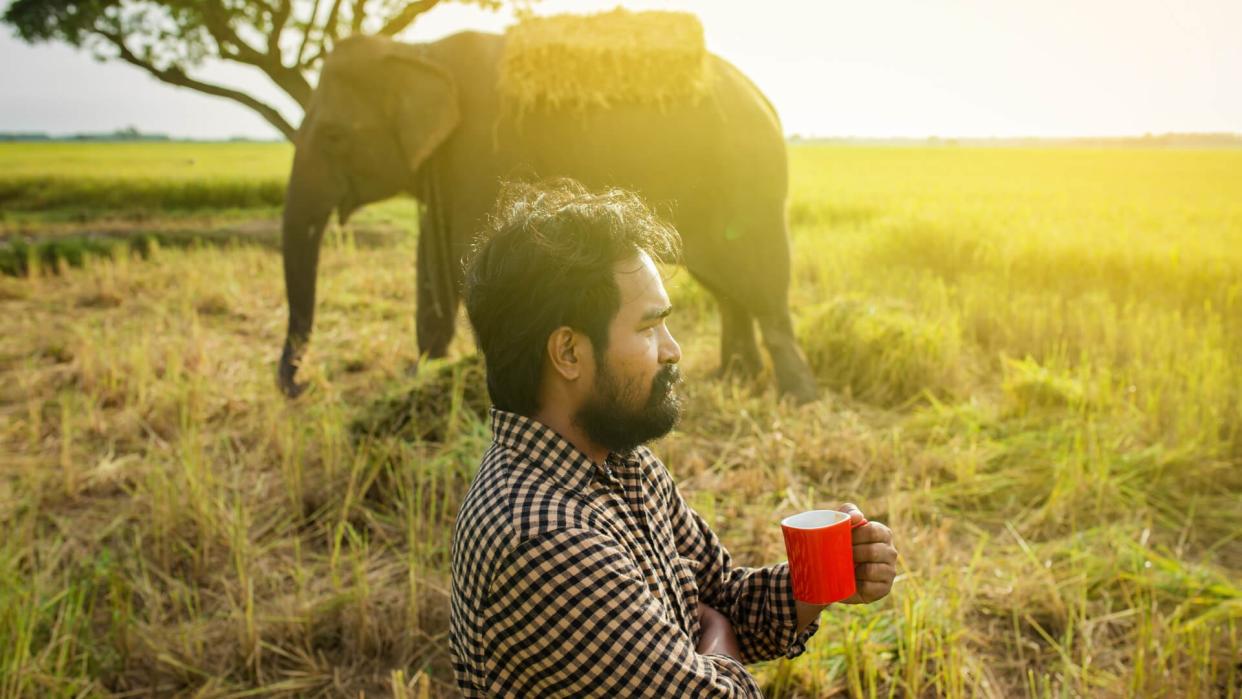
Black Ivory Coffee
Price: About $1,000 per pound
You might have heard of Kopi Luwak, the gourmet coffee beans harvested from the scat of civets. Black Ivory coffee is the same concept but with a different animal — it comes from elephant dung. During the elephants’ long digestive process, enzymes break down the chemicals that cause bitterness in the beans, resulting in a smoother, less acidic cup of coffee.
Time will tell if Black Ivory takes off or if investors need to “dump” their shares, but as of July 2018, you can buy Black Ivory coffee online. If this coffee is a bit out of your price range, but you crave a steaming cup of brew “number two,” you can buy Kopi Luwak for about $330 per pound.

Matsutake Mushrooms
Price: About $55 per pound
The most expensive mushrooms in the world, matsutakes grow in North America, South Korea, Canada, Finland and Sweden, but most are exported to Japan, where there is a high demand. Matsutakes have cultural significance in Japan, where they symbolize fertility and happiness. Other notable symbolic foods include horse meat sashimi (for strength) and the sperm sacs of cod (for virility).
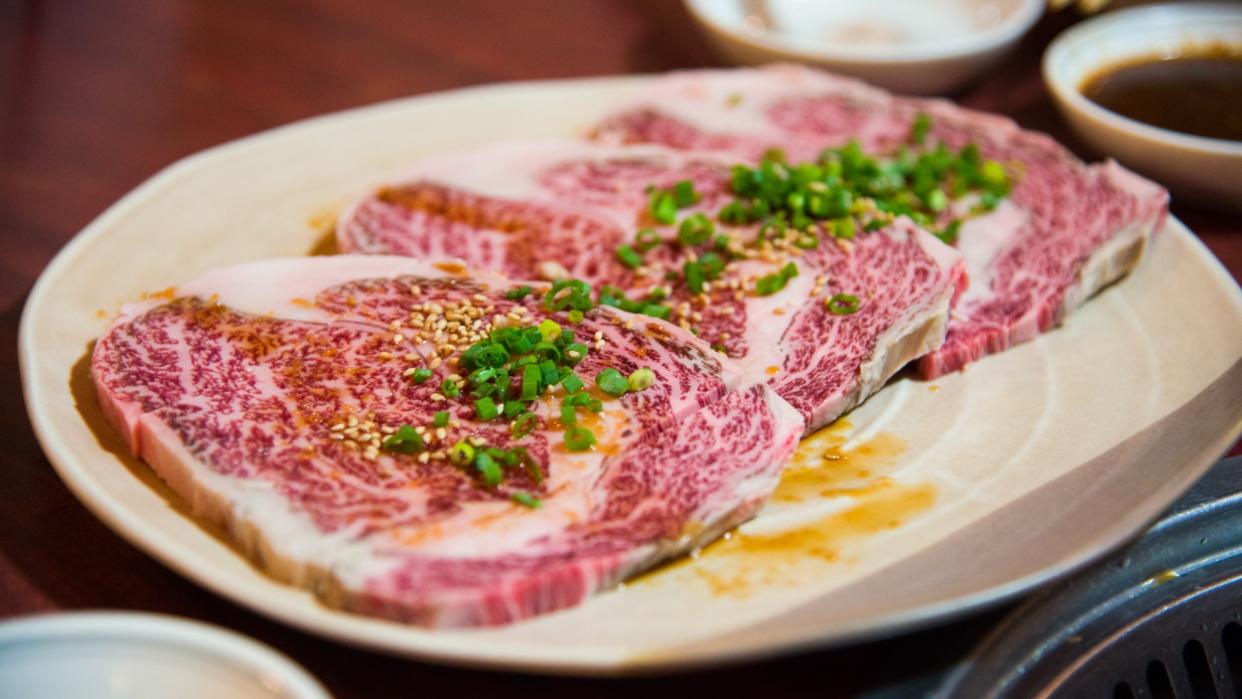
Kobe Beef
Price: About $1,475 for 5 pounds
Luscious marbling, an intense beef flavor and a natural tenderness found in even the toughest cuts make Kobe beef the holy grail of meat for beef aficionados.
Kobe beef has to meet specific certification criteria. Most notably, it must score between 10 and 12 on the Japanese marbling scale — USDA Prime equates to about four — and come from a 100 percent pure Tajima cow born within Hyogo Prefecture.
Some restaurants try to pass off Wagyu — a term that refers to all Japanese beef — as Kobe, but they are not the same. Only nine restaurants serve true Kobe beef in the U.S., and even high-end establishments have been called out after diners found they were trying to pass off Wagyu beef as Kobe.
If you see Kobe on a restaurant menu, ask to see a certification. (It’s part of the agreement between resellers in America and suppliers.) If the restaurant doesn’t have one, then you’re paying too much for your meal.
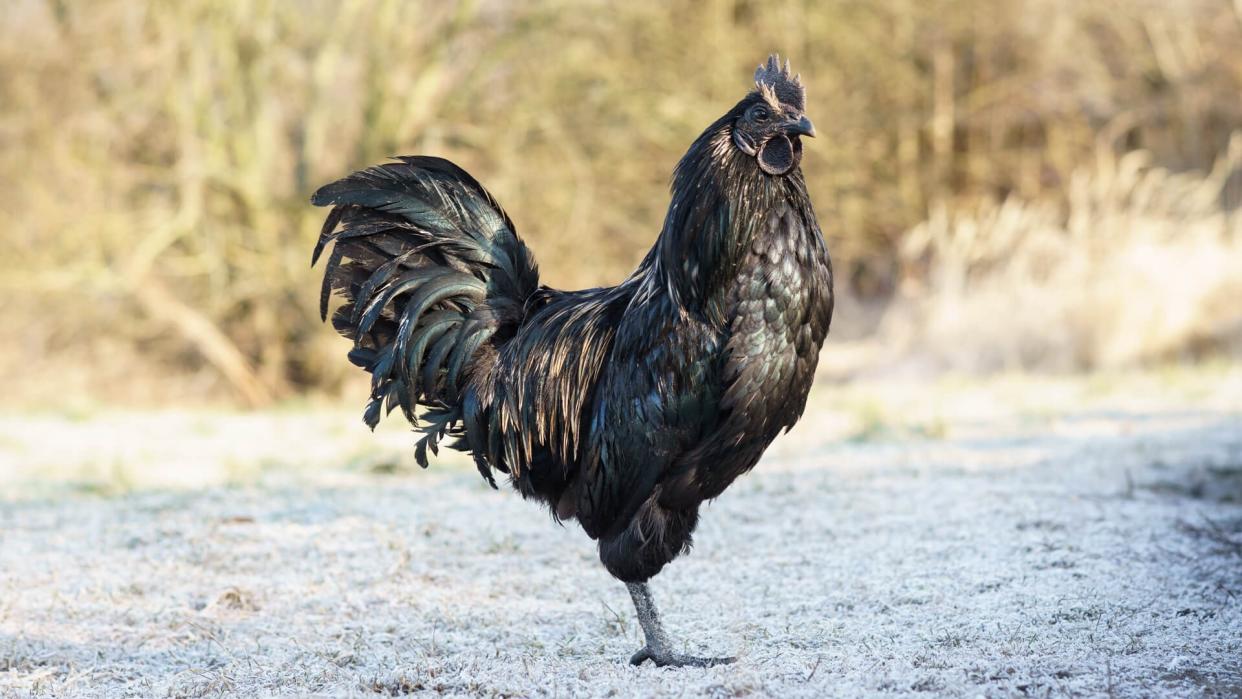
Ayam Cemani Chicken
Price: About $400 per bird
Ayam Cemani chickens from Indonesia throw your perception off at first glance. The inky blackness of their flesh, beak, plumage and skin — basically everything but their eggs — conflicts with how you think chickens should look, and you’re forced to do a double-take.
Not many American chefs actively seek out Ayam Cemani chickens, but they’re widely sought in Indonesia for the purported mystical properties and magical healing powers of their blood. They’re also commonly used as sacrificial animals. When it comes to dinner, though, you’re better off with regular free-range chickens from a local farm.

Densuke Black Watermelon
Price: About $6,100 per melon
Densuke black watermelons — one of which once sold for more than $8,000 — took a price hit around 2011, though one melon will still cost you a lofty $6,100. First-harvest Densukes come with a hefty price tag, and you can even find the same species of Densukes — but not first harvest specimens — in Canada for around $200.
What’s so special about this watermelon aside from its color? Densukes have crisper flesh, more juice and more sweetness than regular watermelons. That said, a blind taste test by the Toronto Star indicated the juiciness and seed quantity — Densukes aren’t genetically modified for seedlessness like supermarket varieties — negatively affected tasters’ experiences.
Find Out: How Much Money You’ll Spend on Food in Your Lifetime

Trifola d’Alba Madonna (White Truffles)
Price: About $4,320 and up per pound
If you’ve ever eaten trifola d’Alba Madonna — also known as white truffles — then you likely frequent high-end restaurants or know someone with very good taste in food. White truffles belong on a list of ultra-expensive foods as rightfully as they do a list of foods with justifiably high costs.
Rarity, coupled with a one-of-a-kind flavor and aroma you will never taste anywhere else, drives the prices of white truffles through the roof. Not even “white truffle” oils peddled at unfairly high prices approach the flavor and scent of real white truffles. Scientists can’t domesticate them, either, so you won’t find them in your local market.
Due to the unpredictable growth habits of white truffles, harvesting methods haven’t changed much since the Roman era. Truffeculteurs — or truffle hunters — still use trained dogs and pigs to scour the forests of the Piedmonte region of Northern Italy for them.
If you can’t get your hands on any white truffles, don’t worry. White summer truffles and black truffles have a legendary taste, too, and come at a much lower cost.

Ruby Roman Grapes
Price: About $11,000 per bunch
Who would pay more than $11,000 for one bunch of grapes? Takamaru Konishi, a well-known premium fruit buyer from the Hyōgo Prefecture, Southwestern Japan, that’s who.
Ruby Romans are about the size of a ping-pong ball and are much sweeter than your average grape. In Japan, certain seasonal fruits routinely attract massive sums from buyers seeking social prestige.
Konishi purchased the Ruby Romans and then held a free tasting at his supermarket. The supermarket business in Hyōgo must be booming if Konishi has the means to purchase grapes at such a high price, and then give them away.

Almas Caviar
Price: About $25,000 per 2.2-pound tin
You can safely assume anything commonly eaten with a pearl spoon costs a lot of money. True caviar — limited to the Sevruga, Ossetra and Beluga species of sturgeon found in the Caspian and Black Seas — typically ranges from $20 to $50 and up per ounce, making even the cheapest variety a treat best paired with champagne and served on special occasions.
But for gourmands with high net worths, there’s Almas caviar from Iran, a pearl-like Beluga variety harvested from rare white sturgeon found in the Caspian Sea. You can only buy Iranian Almas white caviar from Caviar House & Prunier locations in London, so be sure to budget airfare into your total cost.
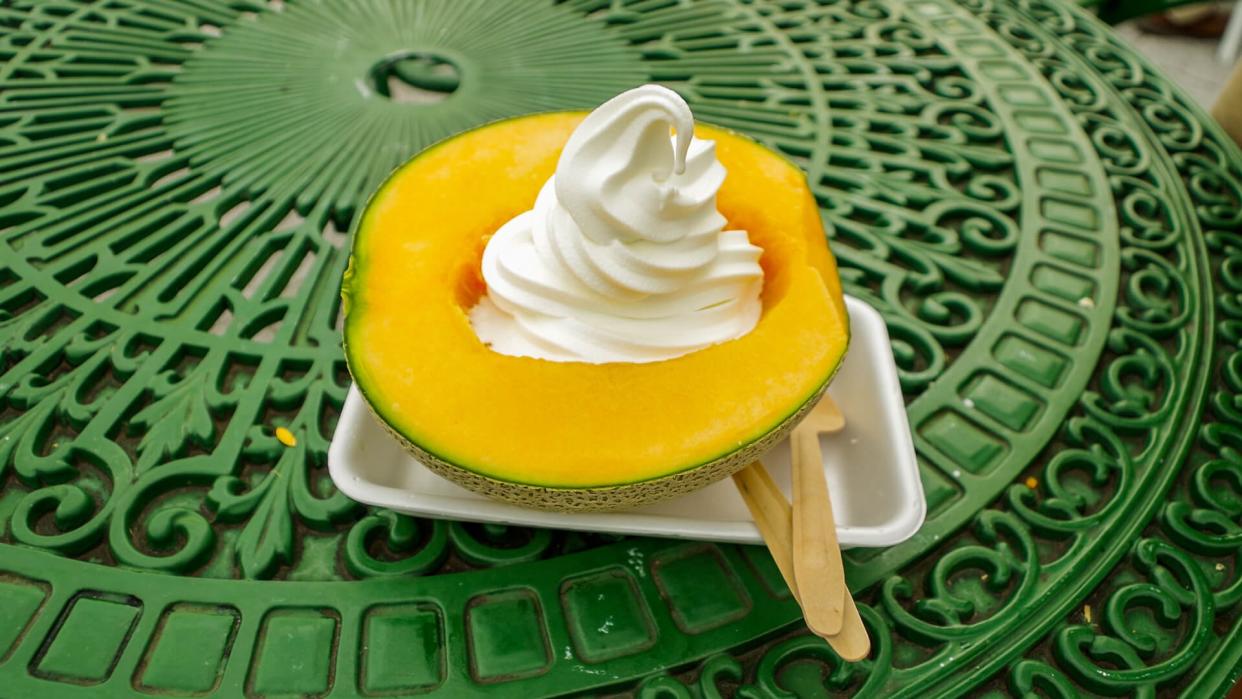
Yubari King Melon
Price: About $12,000 per melon
“Overpriced” best describes Yubari King melons. Sure, you can only get them on Hokkaido Island, Japan. And they have an aesthetically pleasing shape coupled with an ultra-concentrated melon flavor and sweetness. But are they worth the price of a college education? It depends on who you ask.
The best, first-harvest Yubari Kings mainly symbolize status. In fact, it’s not uncommon for a well-paid employee to present a pair of Yubari Kings to a generous employer. In the case of a pair auctioned in late spring 2017 for $27,240, the winning bidder said he wanted to pay back the farmers of Yubari for their hard work. The winning bidder was — you guessed it — Takamaru Konishi, the fruit buyer who also gave away the Ruby Roman grapes.
More From GOBankingRates
Gabrielle Olya contributed to the reporting for this article.
Disclaimer: Some of the photos used are representational.
This article originally appeared on GOBankingRates.com: Almas Caviar and 10 Other Foods Only the Rich Can Afford
